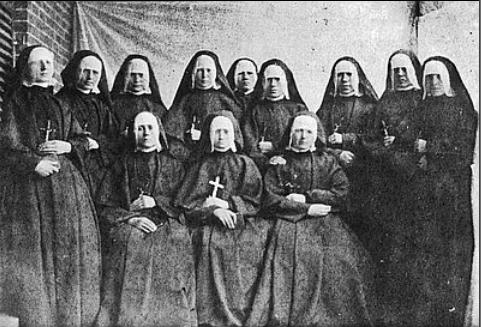
Nearly a century ago, in 1925, the U.S. Supreme Court decided Pierce v. Society of Sisters. The state of Oregon had, by popular initiative, decided every child of school age would attend a “public” school to satisfy minimum educational requirements. Every family was to deliver its child to the state; St. Theresa and Johnson’s Private Academy could no longer satisfy the law of compulsory education.
Hence, the Sisters sued for their professional lives and the litigation rose to the federal judicial summit.
The Court in the 1920s was at the zenith of free market protectionism. Its holding in Pierce was technically a victory for those schools that were the initial plaintiffs, but the Court took the opportunity to broaden its message, stressing:
“[Oregon’s] act of 1922 unreasonably interferes with the liberty of parents and guardians … the child is not the mere creature of the State; those who nurture him and direct his destiny have the right, coupled with the high duty to recognize and prepare him for additional obligations.”
The state, of course, remained secure in its capacity to impose a set of reasonable rules binding upon the private sector of schooling. But the parents remained master of the rest of the content of the child’s formal education; their sovereignty remains solid to this day, including the authority to choose the child’s formal educator. What seems worth adding to our focus is the court’s brief and ambiguous reference to the child’s own separate interest in receiving the parents’ choice: “The child is not the mere creature of the state.”
Children, of course, enjoy a cluster of legal rights, all of them protected both by and against their parent. The state has an obligation to interfere in case of serious abuse by parents. But the state itself also can become the abuser. A parent’s power to decide is of great value to the child, one that is protected by law as a personal right.
But compare, then, the status of the child of the poor with that of the well-off created by our systems of compulsory education. Given the protection of Pierce, the parent of the middle class on up is recognized both in law and fact as the one who nurtures and directs his destiny throughout childhood – that is, unless the parent is systematically and unnecessarily shorn of this authority and duty by the state itself. And so it is with the child of the poor in respect to school.
That boy or girl whose life experience is otherwise determined by adults who know and love him or her sadly has 13 years of early life determined by no human decision at all. “You live here; the law says that you go to school there.” The child is delivered to an institution that has never heard her name, to strangers who will have no reason to remember her, or her parent.
Worse, perhaps, little Jim or Susie is made witness to the near irrelevance of mother and father in the child’s own life story. The best they can do for the child is to play the sympathetic listener to sad stories about which they can do nothing. They “… have the right coupled with the high duty,” but they have been disabled by their own government.
Enter the Supreme Court – maybe.
The child’s own distinctive and separate constitutional right to the parents’ choice could well be considered by the justices as a core element of decision in the Montana school choice case, the latest chapter in the battle over the use of public funding for religious schools. Its emergence here as a clear element of our constitutional law would be a recognition of dignity for the low-income parent and a workable application of the 14th Amendment.


